40. Serval
In last place is the Serval. It is an unusual-looking cat with a short tail, large ears, and long legs. All these are necessary for locating prey in the tall gras where it lives. It is also capable of leaping up to 3.6 meters to land precisely on its prey.

39. Iberian lynx
We came dangerously close to losing the Iberian lynx. Fewer than a hundred remained scattered through the Mediterranean in 2002. By the time scientists realized how close they were to extinction it was almost too late to save them. But the lynx responded well to captivity. Since 2010 more than 170 lynxes were reintroduced into the wild.

38. Chinese mountain cat
The Chinese mountain cat is one of the least known and most rarely seen wildcat. It had not even been photographed until about a decade ago. It lives in Western China.
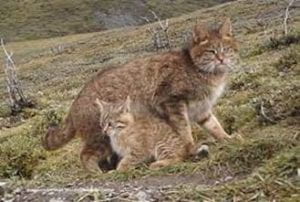
37. Borneo Bay cat
I personally don’t like the look of this cat as much, which is why I ranked it 37th. But these cats are super interesting. The endangered Borneo Bay cat only lives on the island of Borneo and is very elusive and mysterious. These cats are so secretive that almost nothing is known about them, and they are rarely seen in the wild. The Borneo Bay cat avoids travelling along forest trails. That makes them very difficult to see and where to set up camera traps.
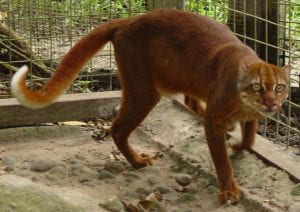
36. Jungle cat
The jungle cat is also known a swamp cat and is a medium size cat that lives in the Middle East to South to Southeast Asia and Southern China. The jungle cat normally hunts during the day.
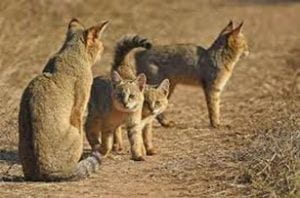
35. Fishing cat
The fishing cat is unafraid of water, and they depend on it for food. It hunts fish and small aquatic vertebrates. They live across South and Southeast Asia.
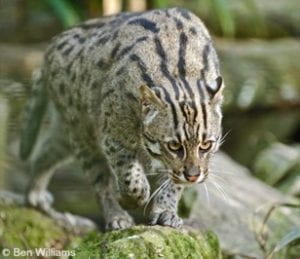
34. European wildcat
It has a patchy distribution in the forests of Western, Southern, Central, and Eastern Europe up to the Caucasus Mountains. They like to eat rodents, rabbits, hares, and small mammals.

33. Eurasian lynx
The Eurasian lynx is the largest member of the lynx genus and has the widest distribution. It lives in Siberia, Asia, and Eastern Europe. It is not threatened but is a tricky cat to spot in the wild.
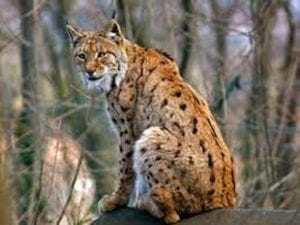
32. Geoffroy’s cat
The Geoffroy’s cat is like a Guina but larger. It also has a wider distribution from southern Bolivia to the Straits of Magellan. This is the only species of wildcat to have a habit of standing upright. They use their tails for balance when they do this to scan the surroundings. They are usually tawny with black spots, but black morphs are not rare.
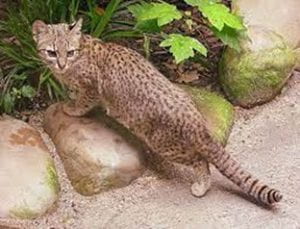
31. Jaguarundi
The jaguarundi is one of the oddest-looking cats with short legs and a long body. Its closest relative is the puma. Its unspotted coloration is close to the puma but different from every other South American cat. It lives in South America and southern North America.
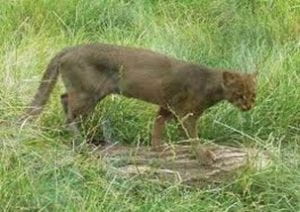
30. Puma
The Puma is a very large cat but does not belong in the big cat family. It is often referred to as a cougar or a mountain lion. The puma lives in South America, Mexico, the United States, and parts of Southern Canada.

29. Caracal
The caracal extends out of Africa through Middle East, Central Asia, and India. Its name comes from their jet-black ears topped with tufts. The caracal is capable of leaping three meters into the air and can take out multiple birds in one swipe.
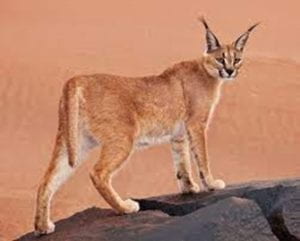
28. African and Asiatic wildcat
After some recent changes, the wildcat species was separated into the African and Asiatic wildcat, and the European wildcat. It is like a domestic cat but with long, slender legs and a long, thin tail. The backs of the ears are a rich dark brown.
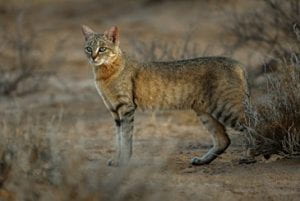
27. Asiatic golden cat
This is the Asiatic Golden cat. It is rarely seen and has a wide yet patchy distribution from India to Malaysia. They prefer the forest and are most active around dawn and dusk. They can climb well but normally stay on the ground where they take down things like water buffalo calves which are many times their size.
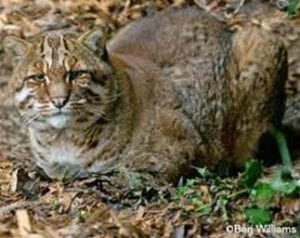
26. Pallas’s cat
HE IS SO FLUFFY!!! It is also known as a Manul; this fluffy cat has the longest and thickest fur of any cat species. It needs the fluffy coat because it lives in the windswept landscapes of rocky slopes in Central Asia. These cats’ shelter in caves and rock crevices. They are not great runners and instead will freeze and become virtually invisible against the rocks.
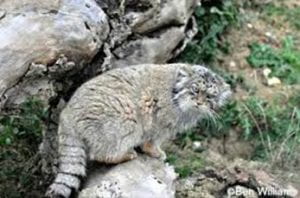
25. Canada lynx
The most northern member of the lynx lineage, the Canada lynx prowls around in Alaska, Canada, and the Northern United States. Its paws are covered in fur which act as snowshoes that allow the lynx to travel over snow covered terrain.

24. Flat-headed cat
The flat-headed cat is a small, endangered cat that lives on the Thai-Malay Peninsula and the islands of Sumatra and Borneo. This cat is an excellent swimmer and loves to hunt in the water. Its feet are semi-webbed, and they have long sharp canine teeth which help them hold on to slippery aquatic prey.
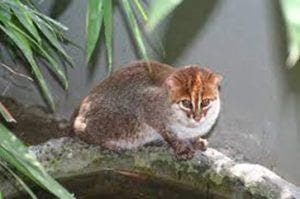
23. Bobcat
The Bobcat is like the Canada lynx, and it ranges from Southern Canada to central Mexico. It is smaller than the Canada lynx and is twice the size of a house cat. Its name comes from its stubby tail. It is amazing at hunting rabbits but will also take birds, insects, rodents, and deer.
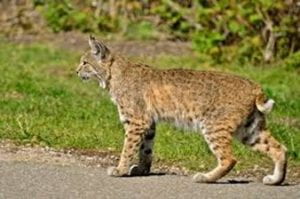
22. African golden cat
The African Golden cat is one of the rarest wildcats and the rarest in Africa. It lives in the rainforest of West and Central Africa. Its preference for the dense tropical forest habitat makes it particularly difficult to spot in the wild.
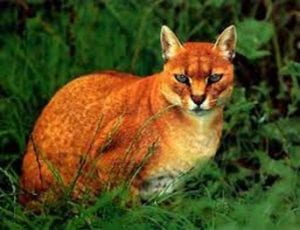
21. Marbled cat
The marbled cat is a beautiful cat with its long tail and patterned coat. They range from the Himalayan foothills to Malaysia, and the islands of Sumatra and Borneo. It is an amazing climber and is thought to spend most of its life in the trees.
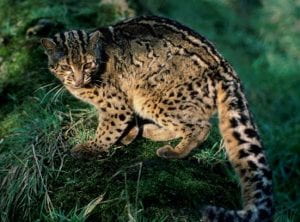
20. Colocolo
The colocolo includes small wildcats that were previously recognized as three different species: colocolo, the Pantanal cat, and the Pampas cat. The recent revision by the Cat Specialist Group recognized the colocolo as a single species that ranges through most of Argentina and Uruguay into Bolivia, Paraguay, Brazil, and Ecuador.
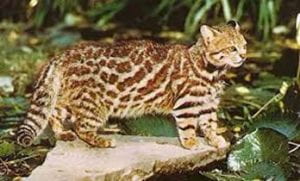
19. Sunda clouded leopard
Until 2016, the clouded leopard was believed to be a single species until genetic analysis techniques revealed that the clouded leopards from the island of Borneo and Sumatra are a separate species, they have diverged from their mainland cousins about 1.5 million years ago. The Sunda clouded leopards are a little darker and smaller than their mainland cousins.
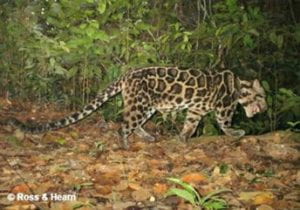
18. Jaguar
The jaguar is the big cat that loves the water the most. It is an amazing swimmer and often can be found resting in tree branches overhanging rivers. It has the strongest bite in relation to body size among big cats. Its jaws can crush the skull of an adult caiman – its favorite prey in the Pantanal.
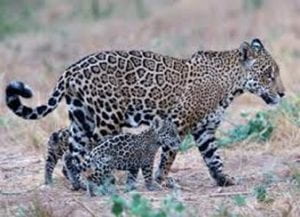
17. Sunda leopard cat
In the year of 2017, the Sunda leopard cat were separated from the mainland leopard cat based on genetic analysis. They live on the islands of Borneo and Sumatra. It is very common in Borneo.
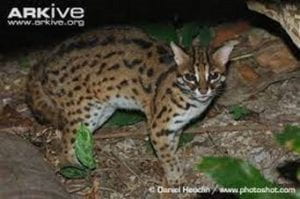
16. Ocelot
The ocelot lives across South America, Central America, Mexico, and Southern Texas. It is probably the most common South American wild cat. They are about twice as big as a house cat. No two ocelots have the same markings on their fur.
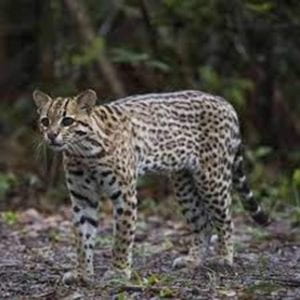
15. Leopard
The leopard has the widest distribution range of all big cats. From the sub-Saharan Africa, through Central Asia, across the Indian subcontinent to Southeast Asia. Some subspecies are highly endangered, but the species was considered secure until experts realized that leopards have lost 75% of their range and it is still declining.
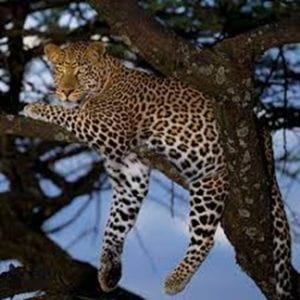
14. Clouded leopard
It is the smallest of big cat species, but also the most acrobatic. It can hang off branches by its feet and tail, climb down trees head-first, and even climb on horizontal branches with its back to the ground! It’s incredible how acrobatic they are. But that’s not the only talent they possess. They are the only big cat that can’t purr, they have the longest canines, relative to body size, among big cats. These amazing cats are vulnerable with a total population of fewer than 10,000 left and still decreasing.
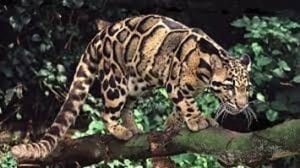
13. Southern oncilla
The Southern oncilla has the same facts as the Northern oncilla but lives in central and southern Brazil, Uruguay, Paraguay, and northern Argentina.
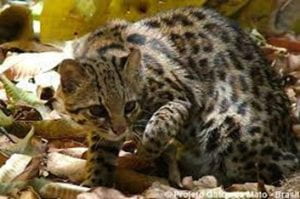
12. Northern oncilla
The oncilla is just like the ocelot and the margay, but it is smaller. It has been recently split into two smaller species which are the Northern Oncilla and the Southern Oncilla. The Northern type lives in Central America, Venezuela, Guyana, and north-eastern Brazil.
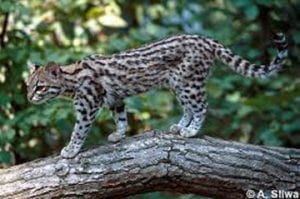
11. Mainland leopard cat
The mainland leopard cat is the most widespread of all Asian small cats as it ranges across South-Southeast Asia and East Asia. This species is tolerant of humans and can often be found in rural areas. They have even been found hanging out around oil palm plantations!
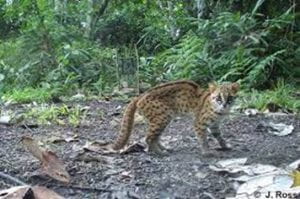
10. Margay
Similar to the ocelot but smaller, the margay is a much more skillful climber and is one of three wild cats to be able to climb down trees head-first. (Clouded leopard and the marbled cat are the other two). It spends most of its life in the trees.
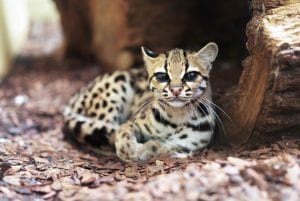
9. Rusty-spotted cat
The rusty-spotted cat is the smallest wildcat in the world and is native to the forests of India and Sri Lanka. It grows to 1.6 kg (3.52 pounds) and is 48 centimeters in length. It likes to be in the trees and on the ground where it catches rodents and birds using rapid darting movements.
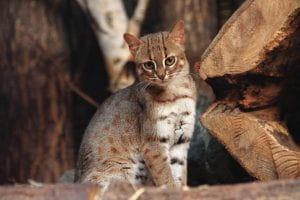
8. Lion
I love the lion! The reason I put it eighth is because a lot of the cats are a lot cuter than the lion. It is the second-largest cat in the world! The lion once lived in Africa, parts of Europe, and Asia. Today, the population is restricted to fragmented populations in Sub-Saharan Africa and one Critically Endangered population in India.
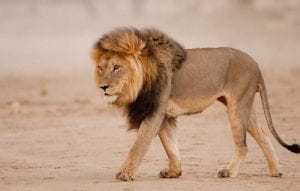
7. Snow leopard
This cat looks so cute! I want to pet one, the fur is so fluffy. The very elusive snow leopard is often referred to as the Ghost of the Mountains. This elusive cat lives in one of the most inhospitable places on Earth. They live in the high-altitude mountain ranges of Central Asia. Each range stretches over huge territories. The snow leopard is considered Vulnerable with an estimated 3,920-6,390 left in the wild.
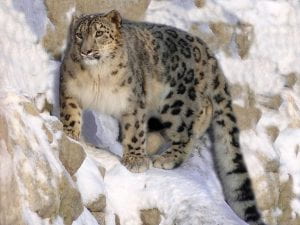
6. Sand cat
This cat lives in the deserts of North Africa, the Middle East, and Central Asia. They are not threatened but they are not very easy to see in the wild. It has a very dense coat that protects it from the chill of desert nights. The Arabian sand cat was thought to be extinct because people had not seen it for years but after a 10-year disappearance they popped right back up.
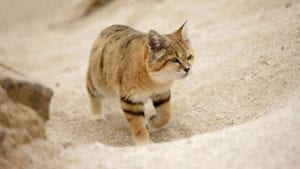
5. Andean cat
The Andean cat is one of the world’s rarest cats and is endangered. It only lives at high elevations in the Andes in Southern Argentina, Chile, Bolivia, and Peru. It is one of the most rarely seen cats in the world. It prefers the steep, rocky, sparsely vegetated terrain where it lives and hunts.
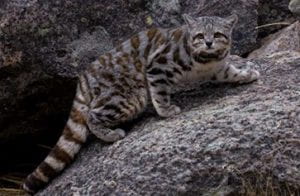
4. Guina
This thing is so cute! The Guina is also known as the Kodkod and is the smallest wildcat species in South America. It lives in south and central Chile with some ranges extending to Argentina. It is a good climber but prefers the ground where it likes to hunt small animals like insects, birds, and lizards. The Guina’s typical coat is brownish yellow to grey brown with dark spots but a black Guina is not uncommon.
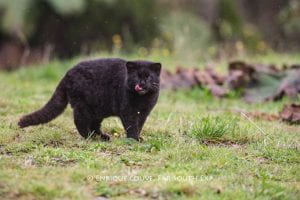
3. Black-footed cat
This is Africa’s smallest wildcat and is the second smallest cat in the world! Just after the rusty-spotted cat. It is an amazing hunter and has an astonishing appetite. It can consume up to 3,000 rodents a year! That’s about 8 rodents a day! It lives in abandoned termite mounds and wanders the savannah in search of rodents.
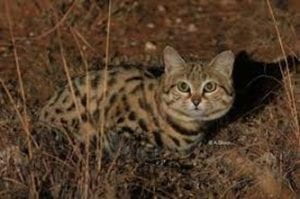
2. Cheetah
Cheetahs are so cool! The cheetah is the fastest wildcat and the fastest land animal (if you read my post on the 10 fastest land animals then you know that). Not only is it fast but it is quite nimble at high speeds. The cheetah is well adapted to the heat in Africa and only needs to drink once in four days.
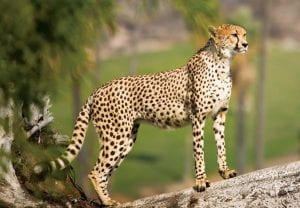
- Tiger
The tiger is my absolute favorite cat. It is 320 kg; the tiger is the biggest cat in the world. But it is also the most endangered big cat. There were tigers in Turkey and on the Indonesian islands Bali and Java, but those ae now extinct. The South China tiger only has about twenty individuals left in the wild. In the 1940s we almost lost the Siberian tiger as well, with only about forty left in the wild. But after a few decades of hard work, we brought the Siberian tiger from the brink of extinction! This picture is of four cubs meeting their father for the first time.

I got most of my facts here on the wildlife diaries. Click here to visit the sight: All 40 Species of Wild Cats and Where to See Them in the Wild
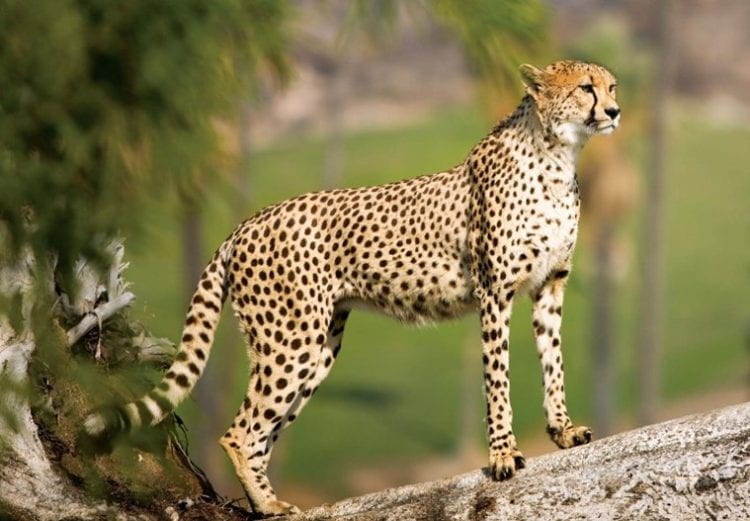
WOW! Very interesting! many of those species I didn’t know existed! Keep up the hard work!
How did you decide to rank the cats? The ones you liked the most? or by speed?
There were several cats I had never heard of before!!
I ranked it by the cats I liked the most. I had not heard of most of those cats to!